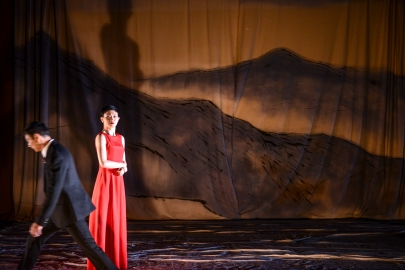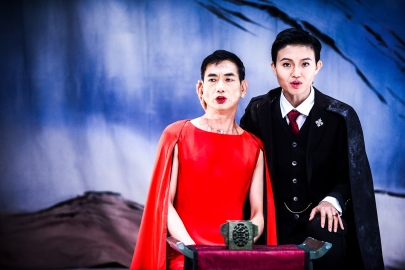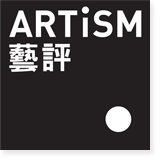Memory Imagined, Theatricality Relived - One Photograph of One Instant of One Show
Barthes, perhaps the most poetic of cultural theorists, was distrustful of the supposed objectivity of the photographic image, be it static or moving, painstakingly studied or totally spontaneous. Grieving the loss of his own mother, torn between her non-existence and the silent image captured by her pictures, the French critic defined the photographic language from the angle of an irresistible subjectivity, as something intimate, meant to create and recreate emotions of lost time. So, for Barthes, the unanswered gaze directed at an image is not a search for documentary values, as even Susan Sontag seemed to concede, but a leap into the ineffable of one’s own affective memory.
What Barthes implies is that, like a theatre show, a photograph can touch us most profoundly, it can change our thoughts and feelings, it can bring tears to our eyes or a sudden smile on our lips. It is simply because photography is the mirror of our past, the only one that can still be accessible in the present. The filmed, moving pictures reach a level of objectivity, a kind of absolute realism that reconnects it with a certain moment from the past. The present remains disconnected from it, however. The film is history, whereas photography is history and present. Equally. Any snapshot invites us to gauge its context, to imagine what preceded and what followed it, to picture an instant scenario in our minds. Photography is a ruin of time and, like any ruin, it entails the seduction of absence: What, how, where, and who was there, beyond the margins of that rectangle cut in straight lines? Often, what remains beyond is more tempting, as in the case of the ruins where the stumps of a building do nothing but pay a silent tribute to its long-lost grandeur. Thus, looking at a photo from our past, we enter a realm of emotion, as Barthes says, but also one of the imagination. It is the same as trying to remember a show once seen, appreciated, loved.
Memory and imagination: this improbable combination is the common paradox of two art forms, theatre and photography. It is made possible by the experience of the visible, but also of the invisible. For this reason, the ontology of both theatre and photography is most fragile, always divided between the certainty of presence and the vagueness of absence. Indeed, in any photograph, there is always something, at least something that remains unseen. Conversely, in any show, there is the mystery of what stays in the wings of the stage. It is that beyond of theatre and photography, which can generate endless speculation. This could be called the phenomenology of inaccuracy, which not even documentary photographs, certified and archived, transformed into court evidence and recognized as peremptory evidence, or indeed documentary theatre, can evade. The imagination, alone, can fill that void of the empty space beyond theatre and photography.


This is why theatre and photography are so deeply related, in the cultural memory of recent history. Photography prolongs the joy of an ephemeral art, fixed in the spectator’s memory through a secret process, brought back to life by the magic of still images. At its best, theatre photography captures the visual wonders of the stage, which seem to appear from nowhere. Where do they come from, though? Such moments are theatre’s advents of grace: Grotowski’s The Constant Prince resting his head on his palm, Lopahin’s collapse in Peter Brook’s The Cherry Orchard, the four stages of 1789 by Ariane Mnouchkine, the mask removed from Ariel’s face at the end of Julie Taymor’s The Tempest, the knife aimed at the child in Robert Wilson’s Deafman Glance, the unreally beautiful snow in Lev Dodin’s Gaudeamus...... Something comes down from heavens to the stage in such moments, and those who witness them are not mere spectators, but photographers who capture the moment with an imaginary camera. Theatre and photography become one, in the inner realm of the one who watches, lives and retains those moments that occur in the blink of an eye. As if, when he or she blinks, the spectator captures them and keeps them forever in the personal kaleidoscope of the mind, as an anthology of indelible images. And then, much later, they add their own emotions, their feelings and not least their imagination to such photograms. The memory of theatre is inseparable from this process of re-imagining.
Such a moment occurs in Tang Shu-wing’s version of Macbeth, a beautiful and powerful display of craft, stage wisdom and subtlety. One sole image dominates the memory of the show, an image that becomes a photogram, distilling the entire production into what Brecht would call the fundamental gestus. The first part of the show seems to be a meticulous preparation for what happens after the interval, when the curtain rises again and Macbeth and Lady Macbeth, with faces covered by masks, utter their lines in an intense dialogue. When they lift their respective masks, at that moment conceived to take each spectator’s breath away, a miracle happens. And the essence of the entire text is clarified through it. With celestial inspiration, the director reversed their roles: The actor who plays Macbeth is now Lady Macbeth and vice versa.
That instant, that imaginary photograph of the couple, as a reversible unit of masculinity and femininity, monopolises the memory of the entire show from then until the final fall of the curtain, as a glowing statement about Shakespeare, our eternal contemporary. The ambivalence of gender identity in the show is Shu-wing’s way of talking about a world that is constantly changing its poles of power, between what is seen as the element of force and the true force that remains in its shadow. It is a gentle reference to an entire tradition of acting that dominated Shakespeare’s times. It is also an authentic, albeit implicit Asian contextualisation: In Yue Opera, women play men’s roles, while in what is generally described as Pekin Opera, it is the other way around. The reversibility proposed in Shu-wing’s show testifies to a mode of stage thinking and a cultural mentality that remain virtually incomprehensible for a European spectator. The ambiguity of gender contradictions was prompted by one key line in the play, which occurs twice. Lady Macbeth asks her husband, “Are you a man?” It is a question of great complexity, one that becomes fundamental in the extraordinary version created by Tang Shu-wing.
That scene, that fleeting moment is a revelation, and the way in which it remains in one’s memory brings theatre and photography together. Imprecise and unreliable, the reminiscence of any show fades away. Poignant, clear and vivid, such scenes never disappear from our minds. They stay there, in the unlikely form of imaginary photographs, waiting to be resurrected—in the fashion described by Barthes—through memory and imagination. They make us wonder about what was beyond them, they invite us to interrogate their context, and they form the base of an ample process of rememorising and reliving the entire experience of being there, in the theatre and watching a show as if holding an imaginary camera.
Photos are provided by Tang Shu-wing Theatre Studio.
Octavian Saiu received his PhD in Theatre Studies from National University of Theatre and Film (NUTF) in Romania and completed another PhD in Comparative Literature at the University of Otago in New Zealand. His Romanian doctoral thesis focused on the concept of theatrical space; the New Zealand one analysed the European reception of the theatre of the absurd. He was a Post-Doctoral Fellow in the English Department of the University of Otago, and has received his Habilitation in Theatre and Performing Arts. Saiu is Adjunct Secretary General of the International Association of Theatre Critics (IATC) and President of the Romanian Section – Theatre Studies of IATC. He has authored ten books on theatre, as well as numerous refereed and nonrefereed journal articles. He is the recipient of the Critics’ Award (2010) and the Award of the Union of Theatre Artists (UNITER) in 2013.






